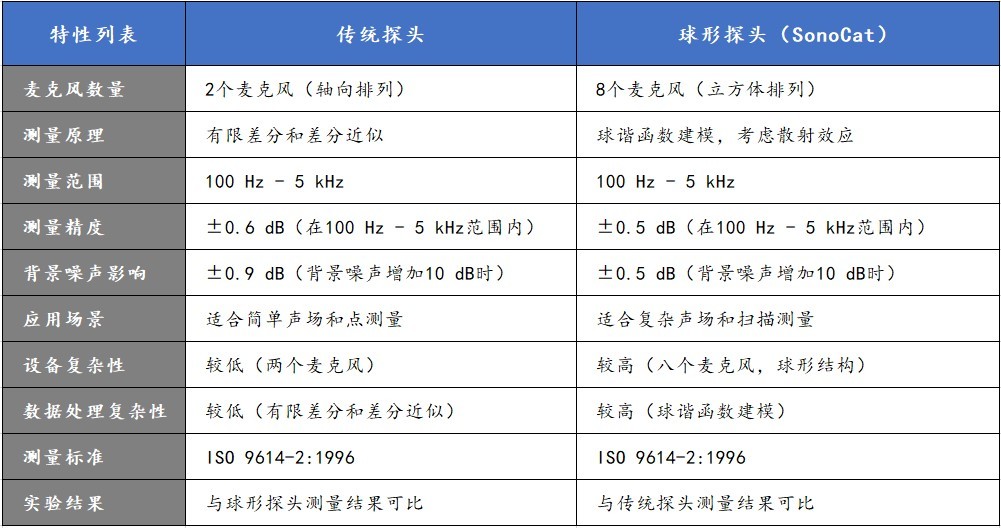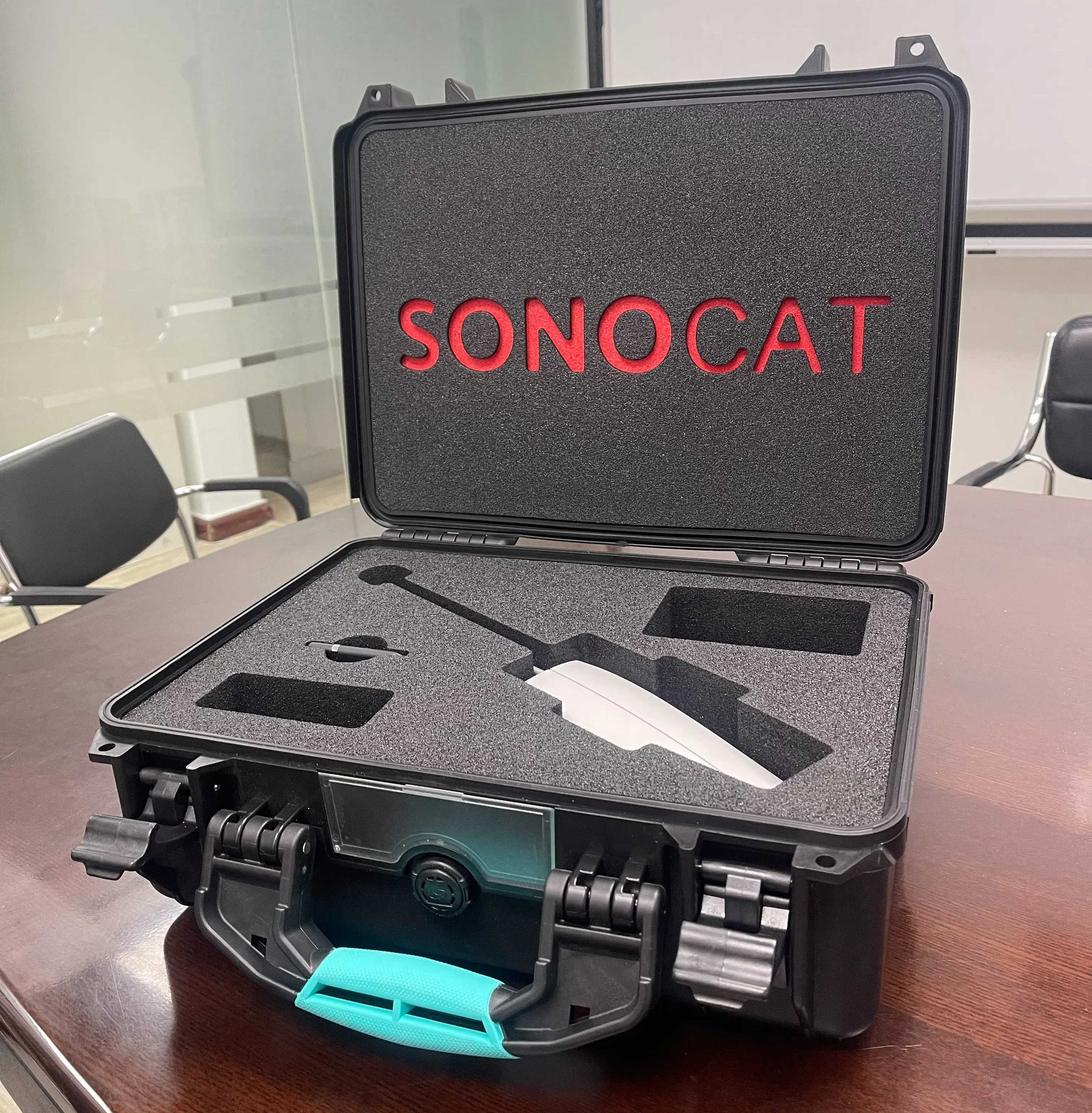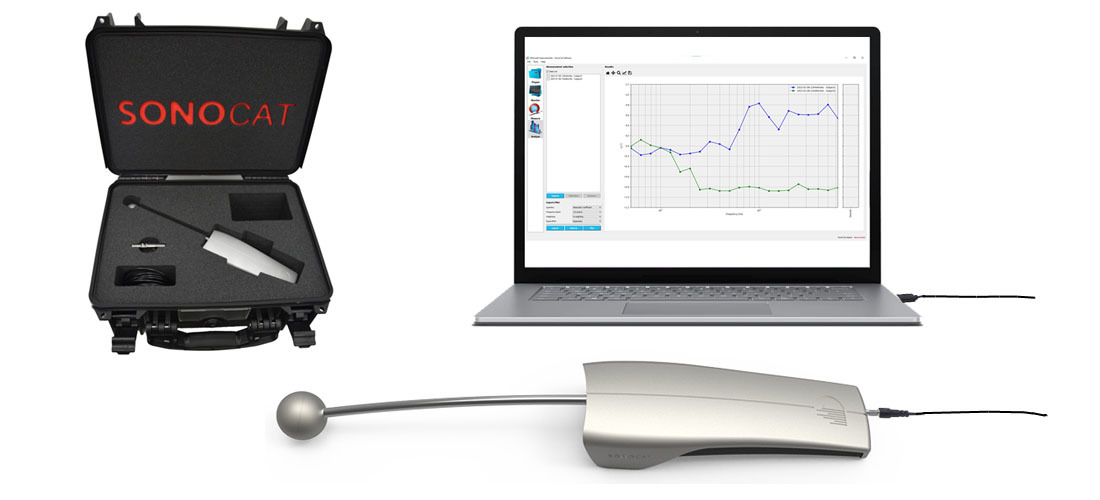

How to choose a probe for on-site measurement of sound power, do you know?
Release time:
2025-01-24 12:41
Source:
Hello everyone!
When we usually measure sound power, we find that the choice of probe directly affects the accuracy and reliability of our measurement results.
So after seeing the article "Measuring Sound Power Using a Cubic Microphone Array in a Small Rigid Sphere" published by Professor Niels Consten and his team today, I felt it was really practical, so I quickly came to share it with everyone.
I won't go into detail about the various theoretical principles in the article; if you're interested, you can check the original text on the website (https://pub.dega-akustik.de/DAGA_2019/data/articles/000203.pdf).
After reading the article carefully, I made a table comparing traditional probes and spherical probes, which you can refer to:

Sound Power Measurement Technology: Comparison of Traditional Probes and Spherical Probes
Based on the research results of Professor Niels Consten and his team, combined with our actual measurement conditions, how should we choose the probe?
The measurement environment is the primary factor we need to consider. If the measurement environment is relatively simple, such as having only one sound source, then a traditional sound intensity probe may be a good choice. Traditional sound intensity probes have a simple structure and are easy to operate, suitable for point measurements. However, if the measurement environment is more complex, with multiple sound sources or background noise, then spherical probes, like SonoCat, may be more suitable. These probes can capture sound field information more comprehensively and have stronger anti-interference capabilities.

SonoCatPhysical Device Display
Next, we need to consider measurement accuracy and frequency range. Traditional sound intensity probes have a measurement accuracy of about ±0.6 dB in the frequency range of 100 Hz to 5 kHz; while spherical probes (SonoCat) can achieve an accuracy of ±0.5 dB in the same frequency range. For measurement tasks with high accuracy requirements, spherical probes should be a better choice.
Of course, anti-interference capability is also an important consideration. In the case of a 10 dB increase in background noise, the measurement results of traditional probes may be affected by ±0.9 dB, while the impact on spherical probes is only ±0.5 dB, indicating that spherical probes perform more stably in complex sound fields.
Finally, let's evaluate the complexity of the equipment and the convenience of operation. Traditional probes have a simple structure and are relatively easy to operate. Spherical probes are powerful, have a relatively complex structure, support complex data processing, and have higher accuracy. In the process of use, traditional probes involve fewer operational skills, while using spherical probe equipment still requires certain operational training, such as the distance when scanning the surface of materials and the angle of holding the device. Additionally, when conducting on-site acoustic measurements, spherical probe equipment (SONOCAT) requires real-time data transmission to a computer for analysis, which slightly reduces convenience, although devices like SONOCAT, which claim to be the most portable in-situ acoustic measurement equipment, also have this issue (of course, if you need to measure material absorption on-site, SONOCAT is already considered the most portable, while many other devices are still constrained to laboratories!).

SonoCatEquipment needs to be connected to a computer during on-site measurements.
In summary, if the measurement environment and tasks are relatively simple and the accuracy requirements are not particularly high, traditional sound intensity probes are an economical and easy-to-operate choice. However, if you need to measure in complex sound fields or environments with significant background noise, or require higher measurement accuracy and anti-interference capability, especially for on-site absorption measurements, then spherical probes, particularly the SonoCat acoustic measurement equipment, will be a better choice.
I hope these suggestions are helpful to everyone. If you have any other specific needs or questions, feel free to communicate and discuss!
Sound Power Measurement,On-site sound absorption measurement,Vibration Noise Measurement,SONOCAT,Sound source localization

